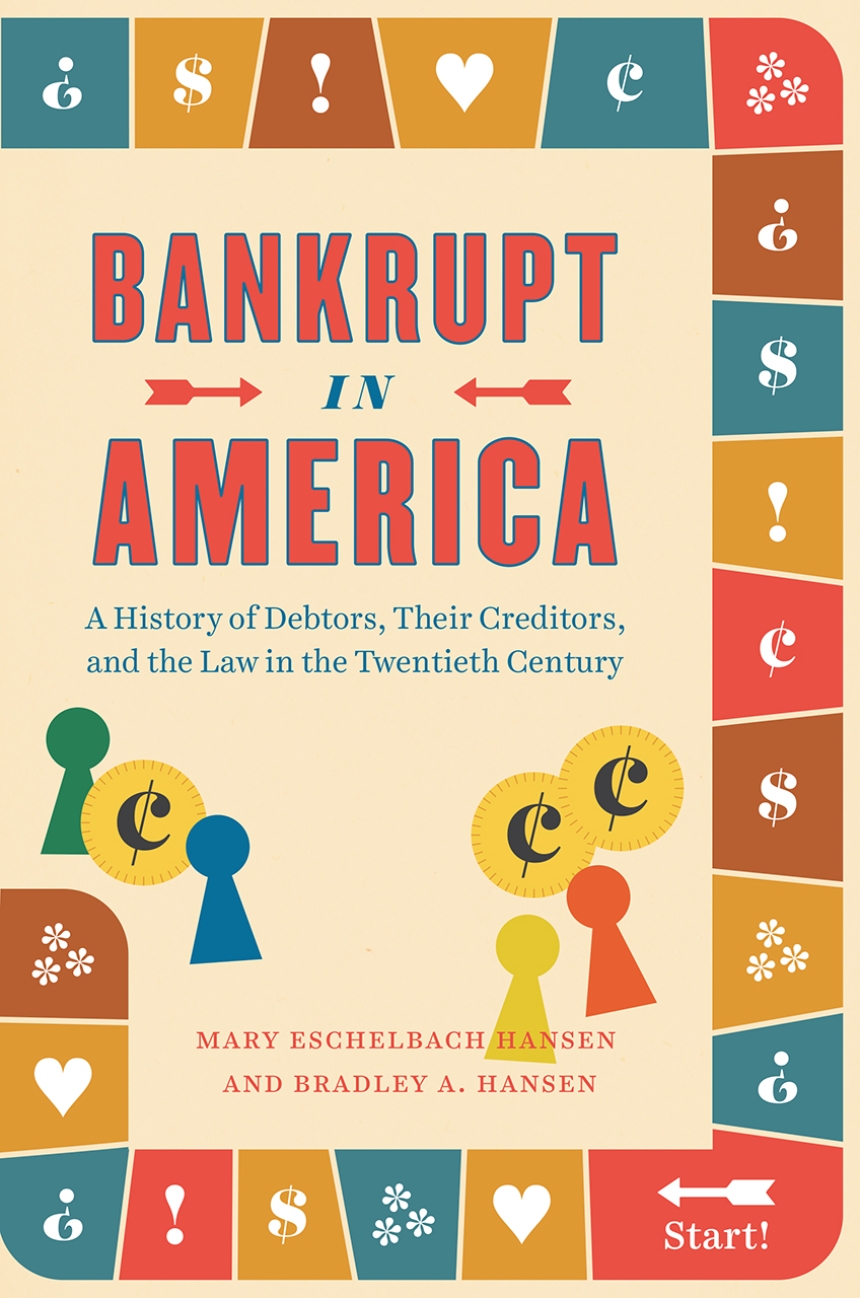Bankrupt in America
A History of Debtors, Their Creditors, and the Law in the Twentieth Century
9780226679563
9780226679730
Bankrupt in America
A History of Debtors, Their Creditors, and the Law in the Twentieth Century
In 2005, more than two million Americans—six out of every 1,000 people—filed for bankruptcy. Though personal bankruptcy rates have since stabilized, bankruptcy remains an important tool for the relief of financially distressed households. In Bankrupt in America, Mary and Brad Hansen offer a vital perspective on the history of bankruptcy in America, beginning with the first lasting federal bankruptcy law enacted in 1898.
Interweaving careful legal history and rigorous economic analysis, Bankrupt in America is the first work to trace how bankruptcy was transformed from an intermittently used constitutional provision, to an indispensable tool for business, to a central element of the social safety net for ordinary Americans. To do this, the authors track federal bankruptcy law, as well as related state and federal laws, examining the interaction between changes in the laws and changes in how people in each state used the bankruptcy law. In this thorough investigation, Hansen and Hansen reach novel conclusions about the causes and consequences of bankruptcy, adding nuance to the discussion of the relationship between bankruptcy rates and economic performance.
Interweaving careful legal history and rigorous economic analysis, Bankrupt in America is the first work to trace how bankruptcy was transformed from an intermittently used constitutional provision, to an indispensable tool for business, to a central element of the social safety net for ordinary Americans. To do this, the authors track federal bankruptcy law, as well as related state and federal laws, examining the interaction between changes in the laws and changes in how people in each state used the bankruptcy law. In this thorough investigation, Hansen and Hansen reach novel conclusions about the causes and consequences of bankruptcy, adding nuance to the discussion of the relationship between bankruptcy rates and economic performance.
224 pages | 18 line drawings, 8 tables | 6 x 9 | © 2020
Markets and Governments in Economic History
Economics and Business: Economics--History, Economics--Money and Banking
Reviews
Table of Contents
List of Figures
List of Tables
Preface and Acknowledgments
List of Tables
Preface and Acknowledgments
Chapter 1: Introduction
Appendix to Chapter 1
Chapter 2: The Intended and Unintended Consequences of the 1898 Bankruptcy Act
Appendix to Chapter 2
Chapter 3: An Emphasis on Workout rather than Liquidation
Appendix to Chapter 3
Chapter 4: Personal Bankruptcy after World War II
Appendix to Chapter 4
Chapter 5: The Renegotiation of the Relationship between Consumers and Their Creditors
Appendix to Chapter 5
Chapter 6: The Triumph of the Consumer Creditor
Appendix to Chapter 6
Chapter 7: Conclusion and Epilogue
Notes
List of Sources
Index
List of Sources
Index
